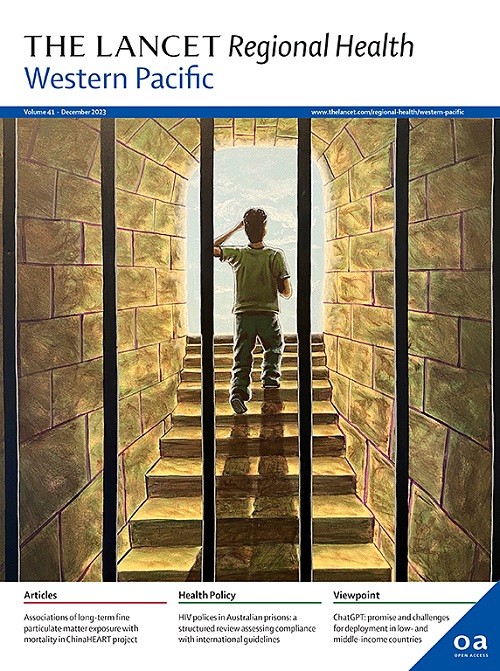Predicting total costs and key drivers in breast cancer surgery patients: ensemble machine learning analyses
IF 7.6
1区 医学
Q1 HEALTH CARE SCIENCES & SERVICES
引用次数: 0
Abstract
Background
As breast cancer continues to present a growing global burden, particularly in China, understanding the factors that drive healthcare costs is crucial for informed policy-making and resource allocation. The primary objective was to identify the key predictors of total hospitalisation costs in breast cancer patients undergoing surgery, using machine learning models. A secondary objective was to explore the influence of different treatment types, patient demographics, and hospital characteristics on total expenses.
Methods
We conducted a multicenter, retrospective study utilising an anonymised healthcare dataset collected from 2016 to 2020 across three provinces of Shanxi, Hainan and Liaoning in China. The study included 19,094 breast cancer patients who underwent surgery, identified using the International Classification of Diseases (ICD-10) codes from C50.0 to C50.9 and corresponding mastectomy procedure codes (19301 to 19307). The analysis incorporated a variety of patient characteristics, comorbidities, and hospital attributes. We applied several ensemble machine learning techniques, including gradient boosting algorithms, to assess the contributions of each variable to total costs, both with and without length of stay (LOS). Permutation importance analysis was performed to rank the key cost drivers. A sensitivity analysis using propensity score matching (PSM) adjusted for age, length of stay, insurance type, admission year (2016–2020), week of admission, hospital level (provincial, municipal, district, or other), hospital location, drug fee, and surgery fee was conducted to validate the robustness of the findings, focusing on variables such as drug ratio and tumor surgery admissions.
Findings
The average total hospitalisation cost per admission was 2,649.60 USD, with a standard deviation of 2,110.95 USD. LOS was the most significant predictor, with an approximate increase of 150.00 USD per additional hospital day. Other important factors included hospital location, number of beds, and drug ratio. After excluding LOS, the top cost drivers were drug ratio, number of beds, general hospital admissions, tumor surgery admissions, and radiotherapy. Breast cancer patients with longer lengths of stay, admissions to general hospitals in Northern China, a history of radiotherapy, and a lower drug ratio were associated with the highest total costs. The model demonstrated robust performance, with a root mean squared logarithmic error (RMSLE) of 0.474. In the PSM analysis, patients with a drug ratio exceeding 30% had significantly lower average total costs (1,681.65 USD) compared to those with a drug ratio of 30% or lower, who incurred substantially higher costs (2,696.40 USD, P < 0.001).
Interpretation
This study underscores the critical role of managing key cost drivers such as LOS and drug ratios in breast cancer surgery. Our results suggest that reducing the duration of hospitalisation and reassessing the allocation of drug costs could lead to lower overall expenses. However, the observed association between higher drug ratios and lower total costs warrants further investigation. Hospital location and capacity were also significant factors, indicating that regional disparities and hospital infrastructure contribute to cost variability. These findings offer valuable insights for healthcare policymakers seeking to enhance cost efficiency and improve patient outcomes in breast cancer care.
预测乳腺癌手术患者的总成本和关键驱动因素:集成机器学习分析
随着乳腺癌在全球范围内(特别是在中国)的负担不断增加,了解驱动医疗成本的因素对于明智的政策制定和资源分配至关重要。主要目标是利用机器学习模型确定乳腺癌手术患者总住院费用的关键预测因素。次要目的是探讨不同治疗类型、患者人口统计和医院特征对总费用的影响。方法利用2016年至2020年在中国山西、海南和辽宁三省收集的匿名医疗数据集进行了一项多中心回顾性研究。该研究包括19094名接受手术的乳腺癌患者,使用国际疾病分类(ICD-10)代码C50.0至C50.9和相应的乳房切除术程序代码(19301至19307)进行识别。该分析纳入了各种患者特征、合并症和医院属性。我们应用了几种集成机器学习技术,包括梯度增强算法,来评估每个变量对总成本的贡献,包括有和没有停留时间(LOS)。通过排列重要性分析对主要成本驱动因素进行排序。采用倾向评分匹配(PSM)对年龄、住院时间、保险类型、入院年份(2016-2020年)、入院周、医院级别(省、市、区或其他)、医院位置、药费和手术费等变量进行敏感性分析,以验证结果的稳健性,重点关注药物比例和肿瘤手术入院率等变量。平均每次住院总费用为2,649.60美元,标准差为2,110.95美元。LOS是最显著的预测因子,每增加一个住院日,大约增加150美元。其他重要因素包括医院位置、床位数和药物比。排除LOS后,最大的成本驱动因素是药物比、床位数、综合医院住院率、肿瘤手术住院率和放疗。住院时间较长、在中国北方综合医院就诊、有放疗史、药物比较低的乳腺癌患者与最高的总费用相关。该模型表现出稳健的性能,均方根对数误差(RMSLE)为0.474。在PSM分析中,药物比超过30%的患者的平均总成本(1681.65美元)明显低于药物比为30%或更低的患者,而药物比为30%或更低的患者的平均总成本(2669.40美元,P <;0.001)。本研究强调了管理主要成本驱动因素(如LOS和药物比)在乳腺癌手术中的关键作用。我们的研究结果表明,减少住院时间和重新评估药品费用的分配可以降低总体费用。然而,观察到的较高的药物比率和较低的总成本之间的联系值得进一步调查。医院的位置和容量也是重要因素,表明区域差异和医院基础设施导致了成本变化。这些发现为寻求提高成本效率和改善乳腺癌护理患者结果的医疗保健决策者提供了有价值的见解。
本文章由计算机程序翻译,如有差异,请以英文原文为准。
求助全文
约1分钟内获得全文
求助全文
来源期刊

The Lancet Regional Health: Western Pacific
Medicine-Pediatrics, Perinatology and Child Health
CiteScore
8.80
自引率
2.80%
发文量
305
审稿时长
11 weeks
期刊介绍:
The Lancet Regional Health – Western Pacific, a gold open access journal, is an integral part of The Lancet's global initiative advocating for healthcare quality and access worldwide. It aims to advance clinical practice and health policy in the Western Pacific region, contributing to enhanced health outcomes. The journal publishes high-quality original research shedding light on clinical practice and health policy in the region. It also includes reviews, commentaries, and opinion pieces covering diverse regional health topics, such as infectious diseases, non-communicable diseases, child and adolescent health, maternal and reproductive health, aging health, mental health, the health workforce and systems, and health policy.
 求助内容:
求助内容: 应助结果提醒方式:
应助结果提醒方式:


